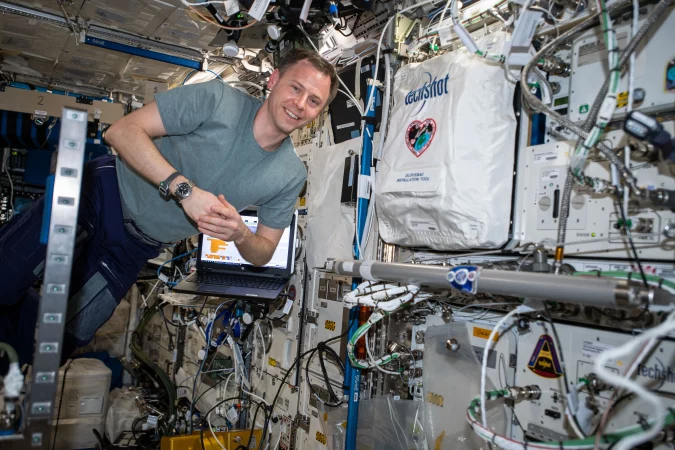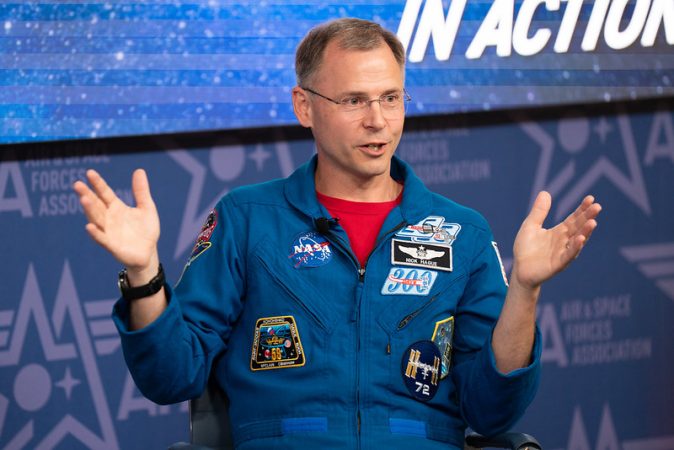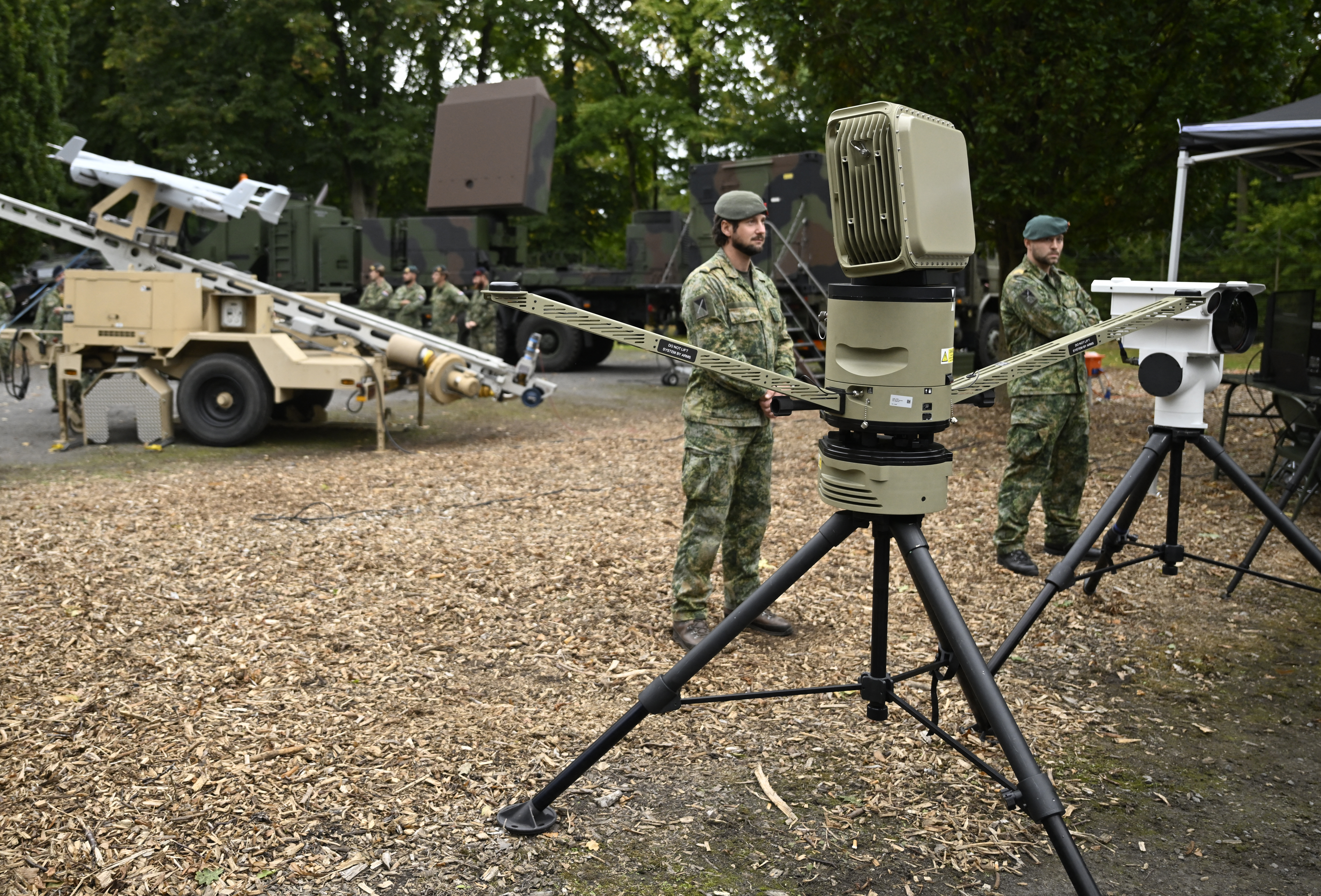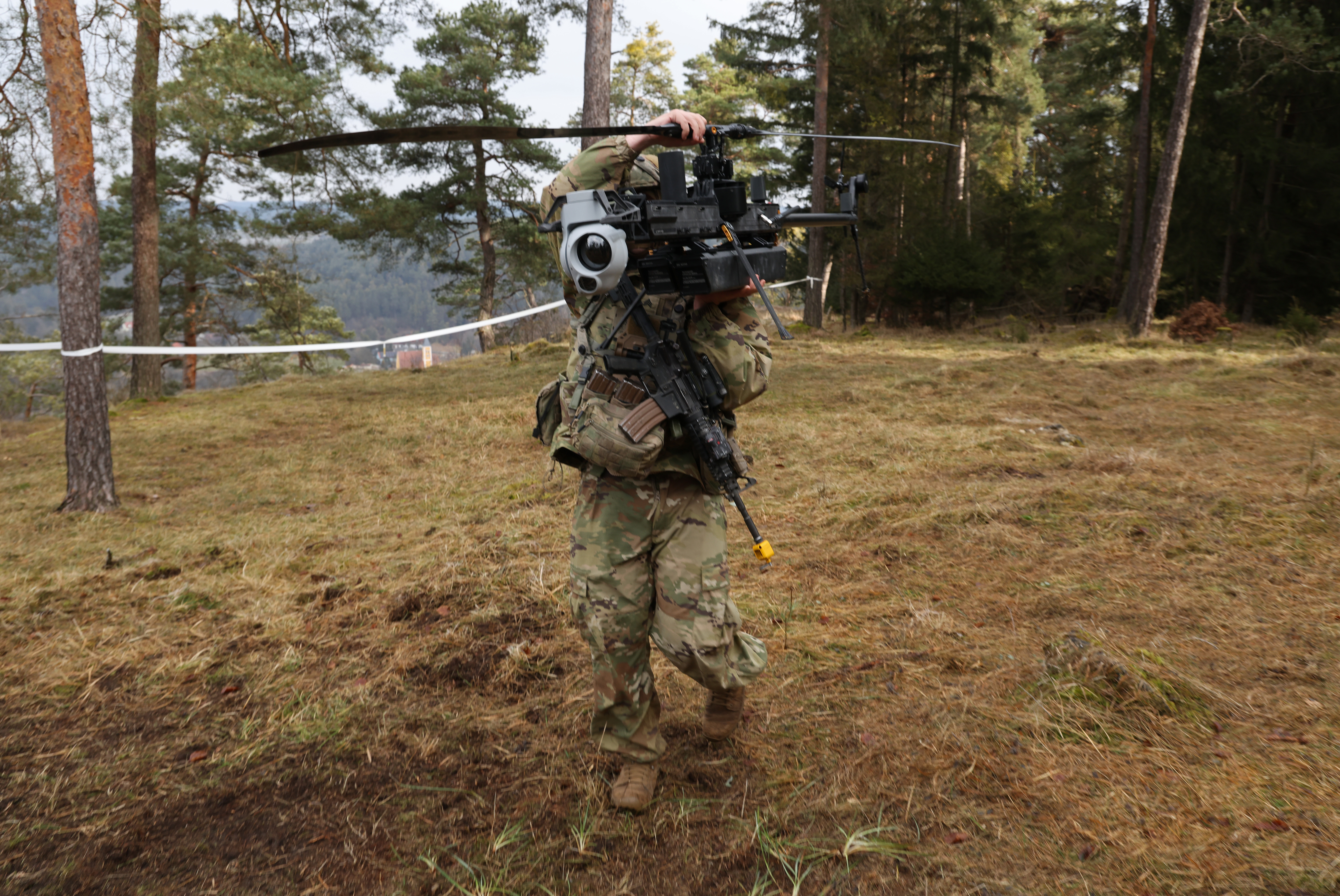
Last year, Space Force Col. Nick Hague—about to become the first active-duty Guardian to launch into space—was thrown a curveball. After 18 months of training to lead a four-person crew, he was reassigned as the commander of a two-member mission: to rescue two astronauts stranded aboard the International Space Station.
For just a couple of weeks, Hague and his crewmate, Roscosmos astronaut Aleksandr Gorbunov, intensely trained to return Barry Wilmore and Sunita Williams using SpaceX’s Dragon capsule—without having flown the spacecraft before. Hague described the difference between the 1960s-era Soyuz and the modern Dragon, outfitted with advanced automation, as “night and day.”
His team launched Sept. 28, 2024 and worked alongside the other two astronauts on the orbiting station for six months. In March, all four safely splashed down off the coast of Florida.
“If you look at my spaceflight history, everything is a surprise. It’s full of ups and downs,” Hague said, reflecting on his 12-year career as an astronaut.
Lessons from Orbit
Hague represents the growing partnership between the National Aeronautics and Space Administration and the Defense Department as the U.S. enters a new space race. He believes Guardians have more to learn from civil space, and can offer their own unique military perspective in return as world powers compete for dominance in the cosmos, Hague told Air & Space Forces Magazine in a June 4 interview.
Hague has been candid about his bumpy road to NASA. He applied to the civilian space agency three times and was rejected twice over the course of a decade before finally earning the symbolic astronaut wings in 2013.
“The year that I got selected, there were some 6,000 people that applied, and they picked eight,” Hague said. NASA chooses new astronauts who offer the right set of skills, but also who meet the stringent medical and physical standards in place to minimize the chance of complications arising during a mission.

Being an Airman or Guardian offers some advantages in the fierce race to join NASA’s crew—many astronauts first serve as military test pilots—but only to an extent. The small astronaut corps prioritizes a balance of experience and diverse perspectives. The job requires being quick on your feet and good with your hands, as maintenance comprises much of the work on orbit.
“You train for the nominal about 5% of the time, and then you spend 95% of the time training for everything that’s going to go wrong,” Hague explained.
His career as an Airman flying F-16 and F-15 fighters, plus T-38 training jets, along with a five-month deployment to Iraq conducting experimental airborne reconnaissance, shaped him in ways he didn’t expect.
“It gave me a lot of opportunities that I’m not sure I would have been afforded if I hadn’t served in the military,” Hague said. “In a stressful environment, can you perform? Are you adaptable?”
His background proved essential during his first mission in 2018, where he launched alongside Roscosmos astronaut Alexey Ovchinin. Less than two minutes into the flight, the Soyuz rocket’s booster malfunctioned while the Soyuz rocket was traveling at 4,000 miles per hour.
“All of a sudden, there’s a violent side-shake, a light’s flashing, and the alarm’s going off,” Hague recalled. With automated systems guiding their separation from the booster, they reentered Earth’s atmosphere from 50 miles up and landed safely in Kazakhstan.
He flew again on the Soyuz only five months later, spending 203 days on the ISS conducting a wide range of experiments. All told, the Guardian has spent about a year in orbit.
“Everything changes. The gravity’s not compressing my spine, so it straightens out and decompresses a little bit, and I grew an inch and a half to 2 inches on orbit,” Hague said. He also had to adjust how he perceives direction, relying on visual cues since there’s no gravity to tell him which way is up.
His research ranged from sequencing DNA to identify microbes sampled from the station, to studying how stem cells behave in microgravity. During his previous assignment, the colonel also worked on 3D-printing human tissue and editing genes to explore new ways of treating diseases. He also volunteered blood samples to help scientists understand how and why spaceflight suppresses the immune system.
“You raise your hand and say, ‘I’m going to be the guinea pig, and you can do your experiments on me,’” he said.
For these astronauts, returning home isn’t the finish line. Hague spent two months rehabilitating to recover and readjust to carrying his own weight on Earth after months in microgravity.

Talent Exchange between Space Force and NASA
The military’s role in the civil space program dates back decades, when the Army led manned spacecraft design before NASA’s creation in 1958. Today, as the newest branch of the armed forces, the Space Force partners with NASA on operations like X-37B spaceplane testing and tracking orbital activity. The service does not currently send troops into space for military operations.
NASA relies on the Space Force for protection. The service is tracking some 47,000 objects in orbit, including active satellites and space debris, and is responsible for ensuring none collide with the ISS. Once aboard, NASA astronauts use GPS signals provided by the Space Force to determine their orientation and position.
“While I’m up there, I constantly got this umbrella of protection,” Hague said of the ISS, which zips around the Earth at 17,500 mph. “I don’t launch to space without the Space Force; I can’t operate my station without the Space Force.”
And the service benefits from the agency’s research. In April, Space Systems Command partnered with NASA to send six experiments to the ISS. The research focuses on space radiation detection, studying lightning in Earth’s atmosphere, and testing space weather conditions. These experiments will stay on the ISS for a year, with data collected to boost the Space Force’s capabilities to protect satellites and improve their reliability.
“There are many ways that we are trying to figure out and actually taking advantage of this cross-pollination,” Hague said. “The skills necessary to operate and perform those two missions share a lot in common.”
Personnel swaps between the Pentagon and NASA allow troops to take assignments like “analog missions,” or simulated space environments that isolate crews for about 45 days to mimic living on Mars. The isolation allows the Space Force to study psychological stressors and how to manage them.
For long-term joint training, NASA’s Johnson Space Center hosts a payloads office that integrates Defense Department research aboard the ISS. Guardians also visit Johnson to immerse themselves in NASA’s culture, operations, and best practices, then bring that knowledge back to the Space Force.
“You’re going to learn a ton while you’re there,” Hague said. “It’s also about how we find opportunities for NASA engineers and civilians to be able to participate in learning how the Space Force does what it does, so they can bring lessons back to NASA in the other direction. That cross-pollination is a big focus.”
Col. Michael Hopkins is the only other Guardian to have ventured into space, transferring to the Space Force while aboard the ISS in 2020. With NASA’s continued mission on the ISS and its ambitions to return to the Moon and beyond, Hague wants more Guardians to seize the chance to explore space.
“The skills that make you effective to do the Space Force mission . . . are very applicable at NASA,” Hague said. “You’re doing, on a daily basis, things that NASA is doing, but you also bring this different set of experience and background . . . that could make you a really attractive candidate.”
The post This Space Force Astronaut Wants to See More Troops in Orbit appeared first on Air & Space Forces Magazine.

Space, Guardian, International Space Station, NASA, nick hague, Space Force
Air & Space Forces Magazine
[crypto-donation-box type=”tabular” show-coin=”all”]







